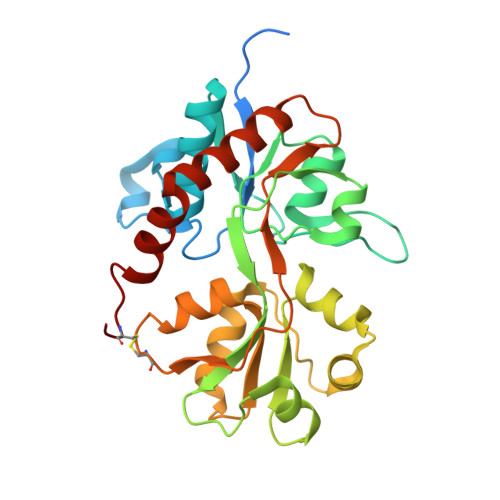Unitary Properties of AMPA Receptors with Reduced Desensitization.
Zhang, W., Eibl, C., Weeks, A.M., Riva, I., Li, Y.J., Plested, A.J.R., Howe, J.R.(2017) Biophys J 113: 2218-2235
- PubMed: 28863863
- DOI: https://doi.org/10.1016/j.bpj.2017.07.030
- Primary Citation of Related Structures:
5NS9 - PubMed Abstract:
Wild-type AMPA receptors display a characteristic rapidly desensitizing phenotype. Many studies point to the dimer interface between pairs of extracellular ligand binding domains as the key region controlling the rate at which the receptors desensitize. However, mutations at the extracellular end of the pore-forming regions (near the putative ion channel gate) have also been shown to alter desensitization. Here we report the behavior of single GluA4 receptors carrying one of two mutations that greatly reduce desensitization at the level of ensemble currents: the dimer interface mutation L484Y and the Lurcher mutation (A623T, GluA4-Lc) in the extracellular end of M3 (the second true transmembrane helix). Analysis of unitary currents in patches with just one active receptor showed that each mutation greatly prolongs bursts of openings without prolonging the apparent duration of individual openings. Each mutation decreases the frequency with which individual receptors visit desensitized states, but both mutant receptors still desensitize multiple times per second. Cyclothiazide (CTZ) reduced desensitization of wild-type receptors and both types of mutant receptor. Analysis of shut-time distributions revealed a form of short-lived desensitization that was resistant to CTZ and was especially prominent for GluA4-Lc receptors. Despite reducing desensitization of GluA4 L484Y receptors, CTZ decreased the amplitude of ensemble currents through GluA2 and GluA4 LY receptor mutants. Single-channel analysis and comparison of the GluA2 L483Y ligand binding domain dimer in complex with glutamate with and without CTZ is consistent with the conclusion that CTZ binding to the dimer interface prevents effects of the LY mutation to modulate receptor activation, resulting in a reduction in the prevalence of large-conductance substates that accounts for the decrease in ensemble current amplitudes. Together, the results show that similar nondesensitizing AMPA-receptor phenotypes of population currents can arise from distinct underlying molecular mechanisms that produce different types of unitary activity.
Organizational Affiliation:
Department of Pharmacology, Institution of Chinese Integrative Medicine, Hebei Medical University, Shijiazhuang, Hebei, China; Department of Pharmacology, Yale University School of Medicine, New Haven, Connecticut. Electronic address: weizhang@hebmu.edu.cn.



















